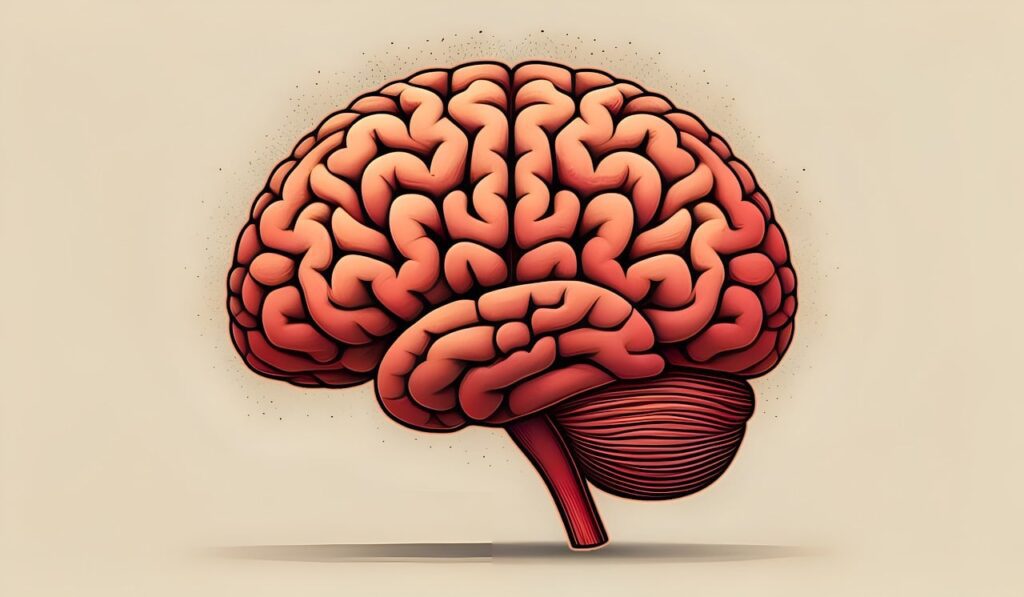A groundbreaking study on adolescent brain development, conducted before and after the COVID-19 lockdowns in the United States, reveals that girls’ brains aged significantly faster than expected. Researchers attribute this rapid aging to the social isolation experienced during the pandemic.

Published by the University of Washington in the Proceedings of the National Academy of Sciences, the study used neuroimaging to measure cortical thinning— a process that typically starts in late childhood or early adolescence. As the brain matures, it prunes unnecessary synapses, resulting in the thinning of its outer layer. While cortical thinning is a natural part of development and can signal improved brain efficiency, it also tends to speed up under stressful conditions and is often linked to anxiety and depression.
By 2021, when the pandemic restrictions began easing, brain scans showed both boys and girls experienced accelerated cortical thinning during the lockdown. However, the effect was more dramatic in girls, whose brains aged 4.2 years faster than predicted, while boys’ brains aged by 1.4 years ahead of schedule.
“That difference is startling,” said Patricia K. Kuhl, co-director of the Institute for Learning & Brain Sciences at the University of Washington and one of the study’s lead researchers. “A girl who was 11 when the pandemic began and returned for testing at 14 now has a brain resembling that of an 18-year-old.”
Dr. Kuhl believes the accelerated aging is due to “social deprivation” during the pandemic. Adolescent girls are particularly reliant on social interaction to cope with stress, such as talking through problems with friends. The lack of these connections likely had a more severe impact on their mental well-being than on boys.
The gender disparity was stark. “In girls, the effects were seen across all brain lobes, in both hemispheres,” Kuhl said. This difference between boys and girls during such a stressful period is “as clear as night and day,” she added.
While numerous studies have shown the negative psychological effects of the pandemic on teens, this research adds a new dimension—physical evidence of brain changes. Though the findings are striking, researchers caution that accelerated cortical thinning does not necessarily indicate damage.
Cortical thinning is sometimes viewed as a sign of maturation, explained Ronald E. Dahl, a director at the Institute of Human Development at the University of California, Berkeley, who was not involved in the study. “While accelerated thinning may seem concerning, it could also be a sign of the brain adapting to new circumstances.”
The study began with 160 children and adolescents between the ages of 9 and 17, aiming to document typical brain changes during adolescence. Initial data collection occurred in 2018, but the COVID-19 lockdowns in 2020 delayed further assessments. By 2021, when the subjects returned for testing, they had all endured prolonged periods of social isolation.
Of the original 160 participants, 130 returned for the second round of testing. Their post-pandemic brain scans were compared to models predicting normal brain development. Though earlier studies suggested pandemic stress might accelerate brain aging, this was the first to examine the differing effects between boys and girls.
“We were blown away by the significance of the results,” said Neva Corrigan, a lead author of the study. “These were not subtle changes. The shift in brain development after COVID was dramatic, especially for girls.”
In girls, accelerated cortical thinning affected 30 different regions of the brain. It was most prominent in the fusiform gyrus, which helps with facial recognition; the left insula, which processes emotions; and the superior temporal gyrus, vital for understanding language. In boys, accelerated thinning was limited to two brain regions involved in visual processing.
It remains unclear whether these changes will be permanent or if brain development will return to a normal pace as teens regain social interaction. Dr. Kuhl expressed hope that as life returns to normal, the effects could reverse. “Let’s say a girl who was 14 during the lockdown is now reconnecting with friends. While all the stress won’t vanish, at least she has that vital release valve,” she said.
However, some experts remain cautious about interpreting the findings. Dr. Bradley S. Peterson, a pediatric psychiatrist at Children’s Hospital Los Angeles, noted that the study’s data sets were based on different subsets of participants. As a result, the findings might not reflect individual changes in cortical thickness over time but rather a snapshot of brain development at two distinct points.
Peterson also highlighted the challenges of attributing these brain changes solely to social isolation. Other factors, such as increased screen time, reduced physical activity, and heightened family stress, could also have played a role.
Though accelerated cortical thinning is often seen as problematic, Peterson emphasized that it may represent the brain’s natural adaptation to a new environment. “In otherwise healthy adolescents, this process might enhance emotional, cognitive, and social resilience in the long run,” he said.
